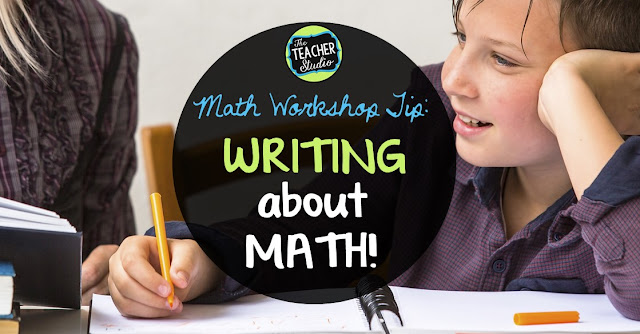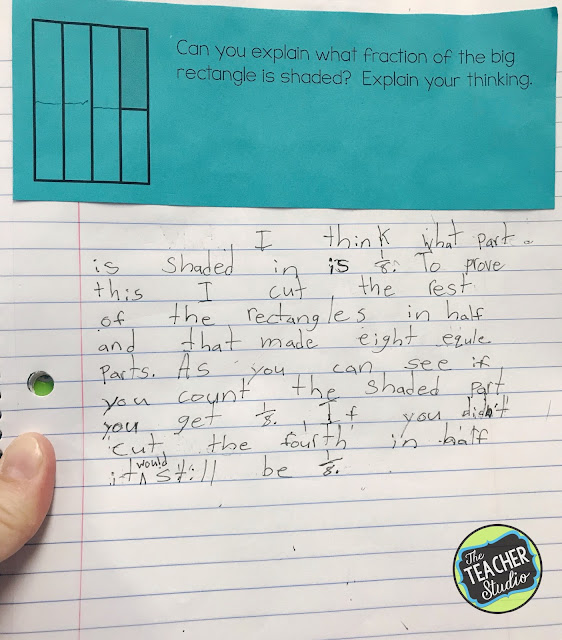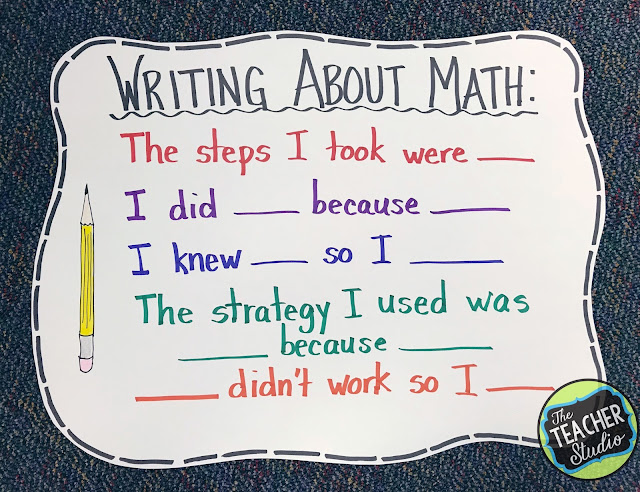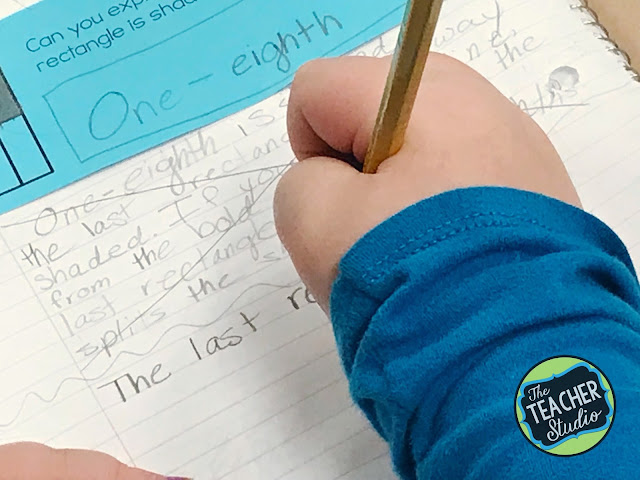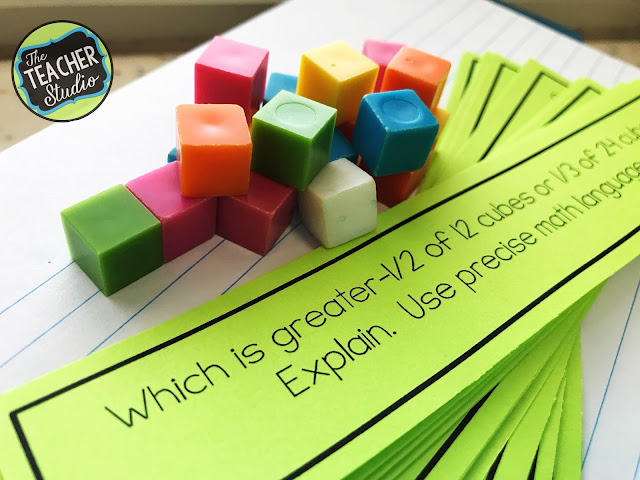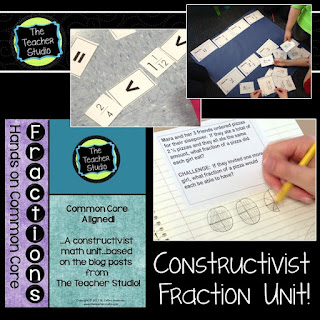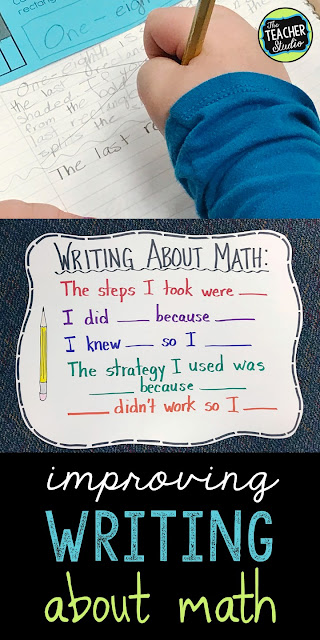Writing about and explaining math thinking is REALLY challenging. Students in the intermediate grades aren’t used to taking their ideas and transferring them to paper when it comes to complex ideas! If you have asked students to “explain their thinking” about a solution, you may have noticed them writing things like:
“First I took the 64 and the 49 and I added them. Then I took the rest away.” or
“I could tell it looked like about a half so I wrote that.” OR my personal favorite…
“I just knew it in my head.” (You’ve heard this, right? It’s not just me?)
What do the Standards for Mathematical Practice Say?
The Standards for Mathematical Practice and other rigorous math standards have made it clear that we need our students to get better at explaining their thinking and critiquing the reasoning of others (and themselves!). The standards mention things like, “make conjectures and build a logical progression of statements” and “justify their conclusions” and “communicate them to others” and more. So how do we get our students to dig deeper and explain their thinking more clearly? (Want to see how I help my students understand these standards? Just CLICK HERE.)
Today I presented my students with one of the fraction challenges in my fraction unit to see a few things–one, if they had internalized an important fraction concept we had been working on and, two, how they were doing with their “explaining their thinking”.
I learned a few things! First of all–almost ALL students got the right answer! #boom
Secondly, our written explanations were in dire need of some work!
I thought I’d share with you my next steps–because I REALLY want to see my students make gains in this area…and stay tuned over the next weeks for an update!
Coaching Students: Explaining Math Thinking
As I was “walking the room” as students were working, I noticed that very few students were writing what I considered to be a quality explanation. I began to wonder if they REALLY knew what I meant when I said, “Write a clear explanation.”
I have noticed that students tend to write procedures rather than thinking. Instead of writing, “I read that I needed to find the difference between the two amounts so I needed to subtract.”, students write, “I subtracted 53 from 82.” I try to tell them to let their math computation speak for itself and let their explanations explain the WHY…but it’s hard!
I started by having students work in trios to share their explanations. They needed to read it aloud and listen to see if they heard WHY and HOW in the explanations. After a few minutes, I asked if any groups had heard any explanations that they thought did a good job. As students nominated other students, I asked their permission to share under the document camera. I reminded them that we weren’t looking for perfection–just for ideas on how to improve our work. I got six samples that we then looked at together. We collected words and phrases like “proved” and math words like “equivalent” as we went, talking about how important it is to be specific with our explanations.
So…we generated a list of fraction words we might expect in this problem…and made it clear that each type of problem will have math vocabulary specific to it that a reader would expect to see.
Anchor Chart Help
I also shared with them an anchor chart I whipped up quickly with some sentence stems…phrases to get them “unstuck” when writing about math. There are so many more–but I wanted them to see that there are different types of writing about math, and you have to choose what makes sense. We tested these with our fraction problem and realized that the third one might be really useful. “I knew that the larger shapes would divide the rectangle into fourths so…” or something like that.
Revising Their Thinking
So the real learning comes in when students take in these student models, the vocabulary list we generated, and these writing stems to set out to revise and improve their own work. It’s not enough to see other people do it–students need a chance to “give it a go” on their own–so off they went to make improvements. When they finished, the met back with their original trio to see if the group agreed with the improvements! Mission accomplished!
We will continue to refine our anchor chart by adding new phrases we find as we work on different problems and will continue our discussions about how to improve our math writing.
Coming up next?
If you are interested in seeing more of the fraction work we do in our class, just click the image below.
Want to pin this for later?

